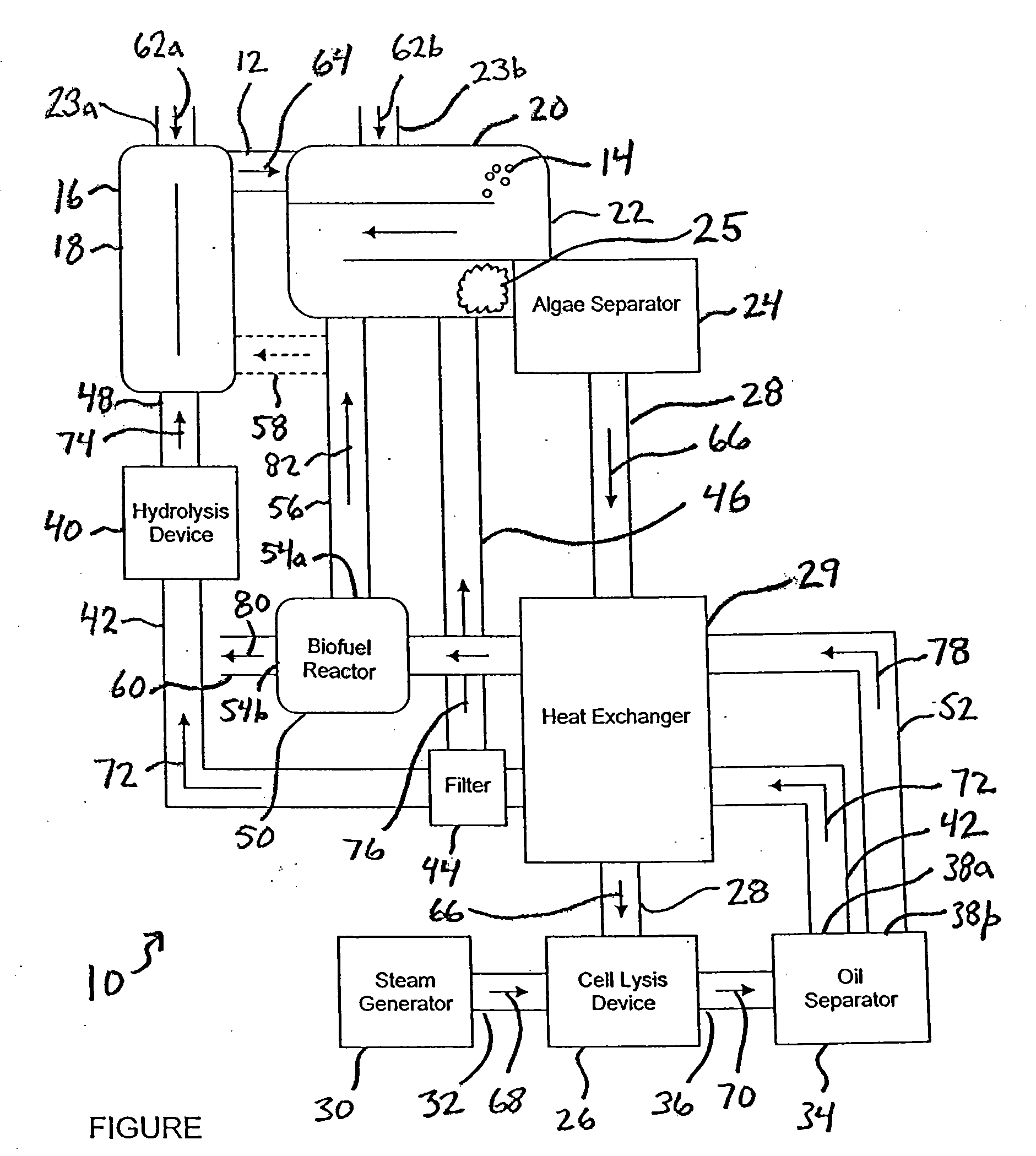High efficiency separations to recover oil from microalgae
a technology of high efficiency and separation, applied in biofuels, biomass after-treatment, specific use bioreactors/fermenters, etc., can solve the problems of increasing the cost of the process involved in creating algae-derived biofuel, increasing the cost of the process involved in producing plant oil biofuel, and increasing the rate of intracellular oil production in algae cells, etc., to achieve the effect of high oil content, reduced heating costs and increased oil conten
- Summary
- Abstract
- Description
- Claims
- Application Information
AI Technical Summary
Benefits of technology
Problems solved by technology
Method used
Image
Examples
Embodiment Construction
[0011]Referring to the FIGURE, a system for lysing algae cells in accordance with the present invention is shown and generally designated 10. Specifically, in the system 10, steam is used to efficiently lyse algae cells to facilitate the use of intracellular oil. As shown, the system 10 includes a conduit 12 for growing algae cells 14 with high oil content. As further shown, the conduit 12 includes an upstream conduit section 16 that is defined by a continuously stirred first stage reactor or chemostat 18. Also, the conduit 12 includes a downstream conduit section 20 that is defined by a plug flow second stage reactor 22. In this manner, the conduit 12 passes through the chemostat 18 and the plug flow reactor 22. For purposes of the present invention, the conduit 12 is provided with ports 23a and 23b for receiving input materials into the upstream conduit section 16 and the downstream conduit section 20, respectively.
[0012]As further shown in the FIGURE, the system 10 includes an al...
PUM
| Property | Measurement | Unit |
|---|---|---|
| velocity | aaaaa | aaaaa |
| residence time | aaaaa | aaaaa |
| pressure | aaaaa | aaaaa |
Abstract
Description
Claims
Application Information
 Login to View More
Login to View More - R&D
- Intellectual Property
- Life Sciences
- Materials
- Tech Scout
- Unparalleled Data Quality
- Higher Quality Content
- 60% Fewer Hallucinations
Browse by: Latest US Patents, China's latest patents, Technical Efficacy Thesaurus, Application Domain, Technology Topic, Popular Technical Reports.
© 2025 PatSnap. All rights reserved.Legal|Privacy policy|Modern Slavery Act Transparency Statement|Sitemap|About US| Contact US: help@patsnap.com


